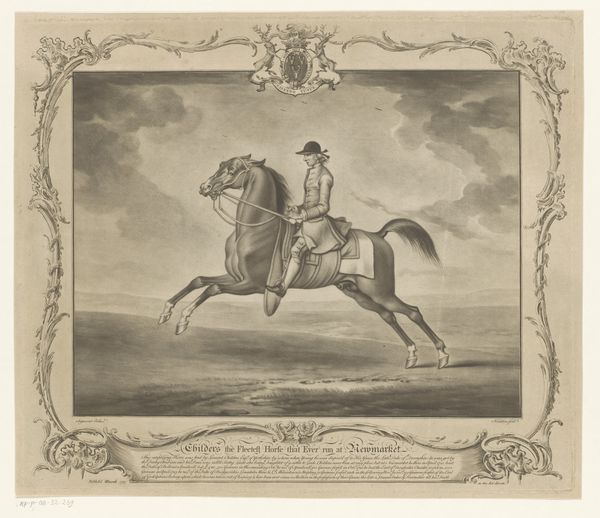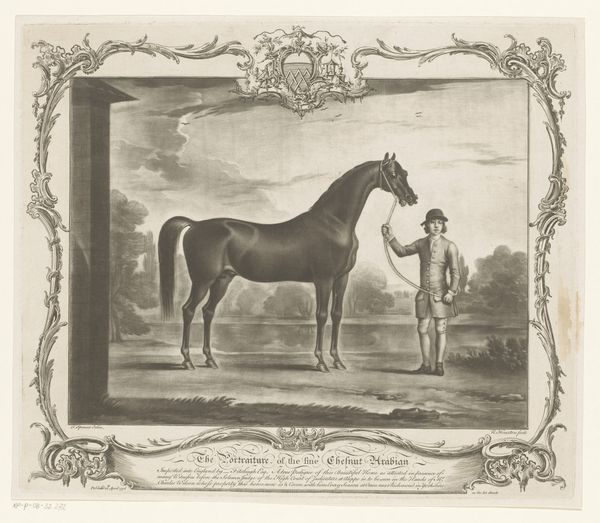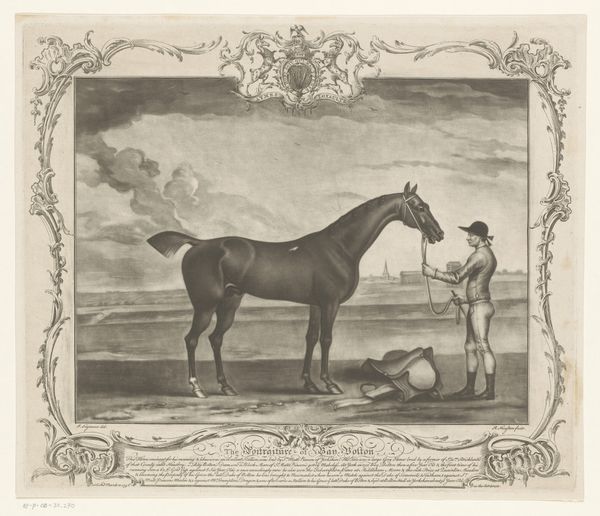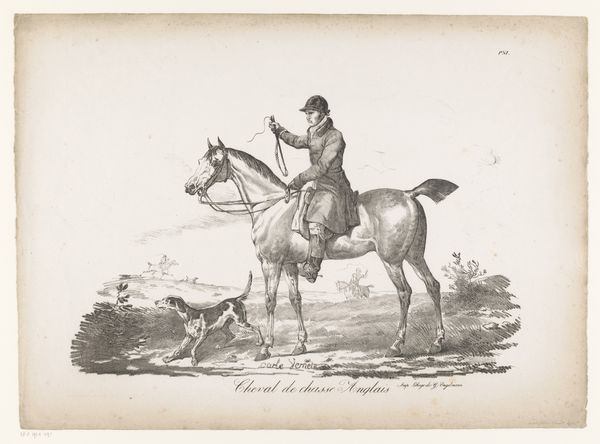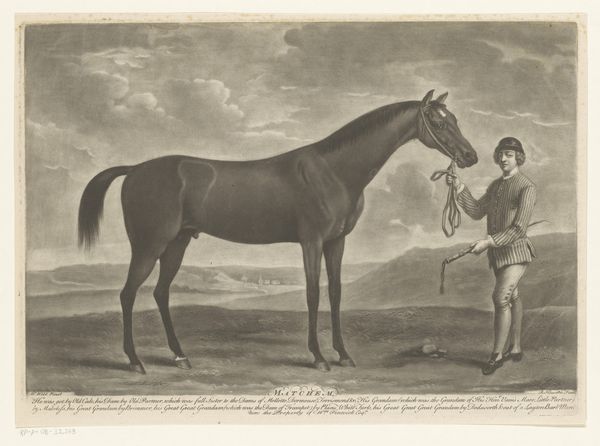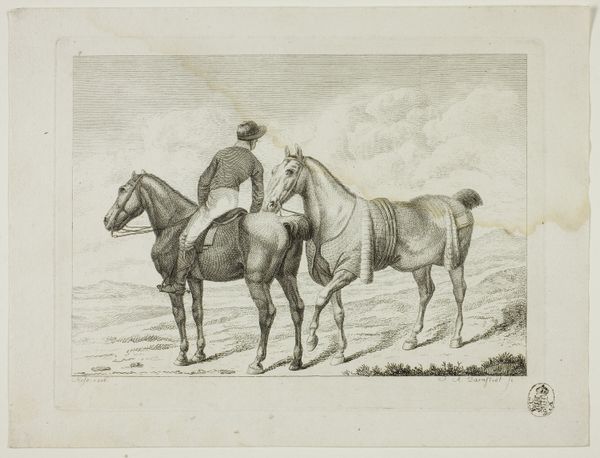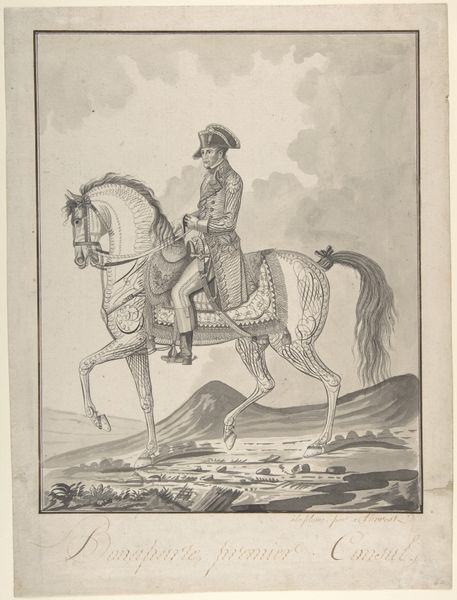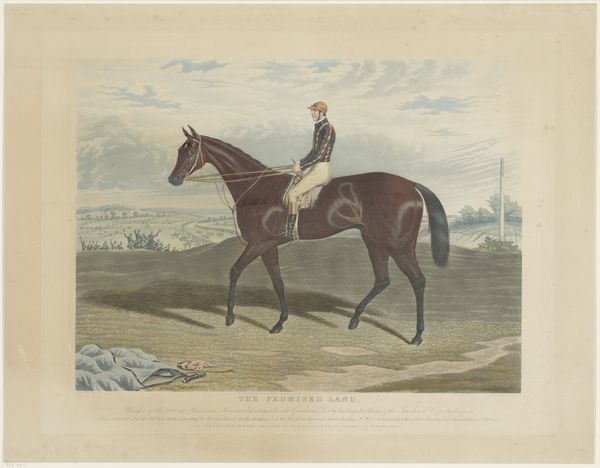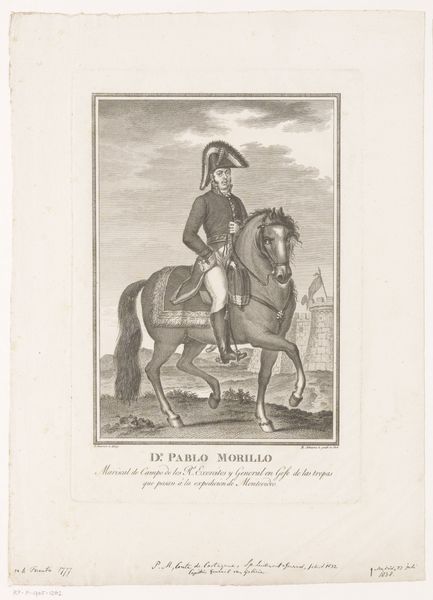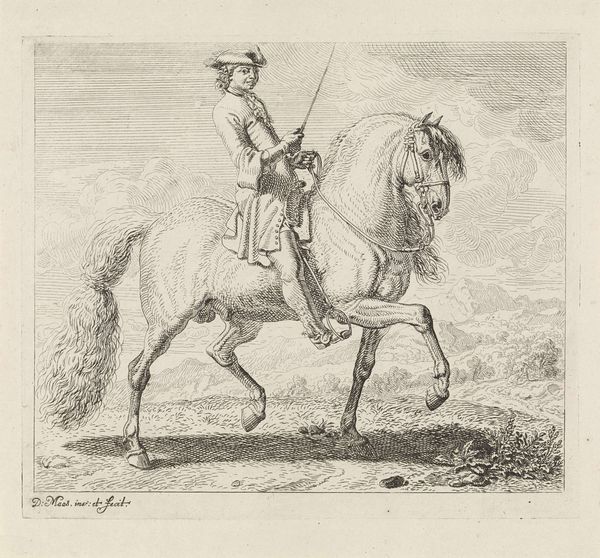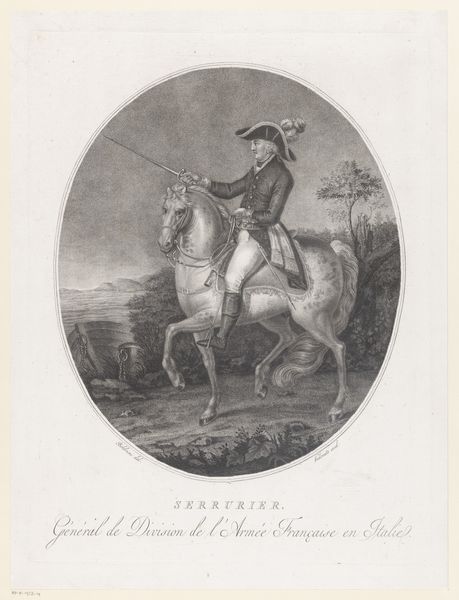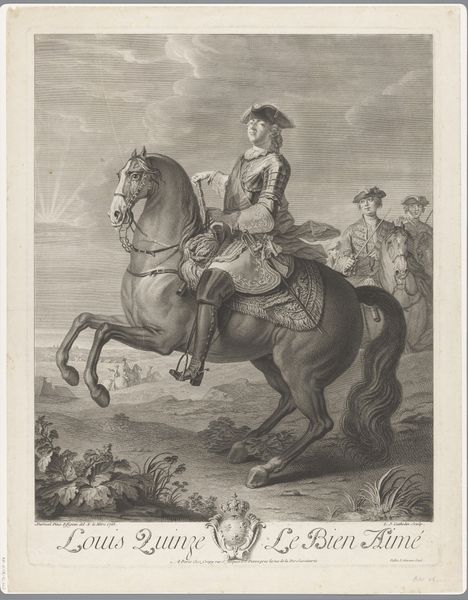
print, engraving
#
baroque
# print
#
old engraving style
#
figuration
#
line
#
genre-painting
#
engraving
#
realism
Dimensions: height 298 mm, width 354 mm
Copyright: Rijks Museum: Open Domain
Curator: Here we have Richard Houston's "Race Horse with Jockey," an engraving dating back to 1755. It is held here at the Rijksmuseum. Editor: Right away, I see this bounding energy – look at that horse frozen mid-gallop! There's a real sense of restrained power trying to break free of the frame itself, and it is all captured in line and shadow. Curator: Yes, that dynamic tension is crucial. Houston masterfully uses the linear quality of engraving to suggest form and movement. Notice the fine details in the horse's musculature and the jockey's attire. This speaks to the Baroque fascination with detail, yet tempered by a burgeoning realism. The work showcases superb craft through line engraving. Editor: The border seems interesting; so ornate and a bit over the top, isn’t it? The subject feels poised and collected, which provides a certain mood: calm yet action-oriented. I'm reminded of someone trying to tame and appreciate untamed nature, capturing both in art. Curator: Precisely. The elaborate baroque border functions as a framing device that heightens the sense of drama. Consider how this ornate framing tradition serves to isolate and elevate its subject as worthy of study. Editor: It is a funny thing, capturing a racehorse –an animal of raw speed –in a static image! But isn’t that the point of art itself? To suspend a moment, offering us a long, lingering look that the world doesn’t normally allow? Curator: Well said. The artwork encourages us to contemplate the interplay between the fleeting and the eternal, to fix this specific scene—horse, rider, landscape, a particular moment in time. It does this even with simple lines. Editor: Thinking about the process of its making makes me smile. Look how the whole engraving uses layers of complexity to bring our feelings of liveliness alive from what seems like such a rigid framework. And, indeed, that rigidness somehow adds value and charm. Curator: Indeed, by embracing those very limits—black and white, the static line—Houston achieves a vivid portrayal of motion and dynamism that we still find compelling centuries later. Editor: And now, appreciating it even more! Thank you. Curator: The pleasure was all mine.
Comments
No comments
Be the first to comment and join the conversation on the ultimate creative platform.
